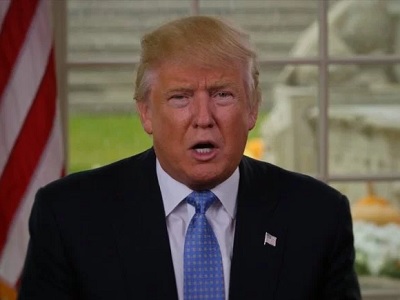
Just days ahead of US President Donald Trump’s official visit to the occupied West Bank and Israel, the White House released a map on Friday of Israel with the occupied Palestinian territory, including East Jerusalem, and the occupied Golan Heights omitted from the map.
While Israel occupied the territories in 1967, Israel extended Israeli law to the Golan Heights, but does not claim sovereignty in the West Bank – though many right-wing Israeli lawmakers continue to advocate the West Bank’s annexation and consider illegal settlements built on Palestinian land part of Israel.
“I hope this is just ignorance and not policy,” Israel’s ultraright Justice Minister Ayelet Shaked said, according to Israeli media outlet Ynet, in response to the map, adding that she continued to have high hopes that Trump would fulfill his campaign promise and move the US embassy from Tel Aviv to Jerusalem.
Majority of Jewish leaders in diaspora in favor of moving US embassy to Jerusalem https://t.co/MTkUNfb8tt
— Israel News (@IsraelNewsNow) May 21, 2017
Ynet reported that the right-wing Israeli leader also said that Trump was elected on statements that supported moving the embassy to Jerusalem and should therefore commit to his promises, while she was elected by her constituency to “ensure that no Palestinian state is established.”
Trump’s campaign promise of moving the US embassy from Tel Aviv to Jerusalem would be seen as the first step to a drastic abdication of longstanding US policy that has largely adhered to international standards on Israel-Palestine, which maintains East Jerusalem as an intricate part of occupied Palestinian territory and the capital of any future Palestinian state, despite Israel’s de facto annexation of the territory.
The fate of Jerusalem has been a focal point of the Israeli-Palestinian conflict for decades, with numerous tensions arising over Israeli threats regarding the status of non-Jewish religious sites in the city, and the “Judaization” of East Jerusalem through settlement construction and mass demolitions of Palestinian homes.
White House-issued map of Israel draws Tel Aviv's anger https://t.co/XCrjTmov4y pic.twitter.com/GlM9spO0pV
— ANADOLU AGENCY (ENG) (@anadoluagency) May 20, 2017
Trump has remained largely elusive regarding his policies on Israel-Palestine, as he has expressed his support for Israel’s illegal settlement building on Palestinian territory in the past, while also making statements critical of settlements following his inauguration.
Trump has repeatedly expressed his desire to bring about a peace deal between Israel and the Palestinian Authority (PA), while documents released by Foreign Policy magazine late last month showed that Trump’s 2018 budget would see a 4.5 percent increase in US foreign aid to the occupied West Bank and the besieged Gaza Strip.
Trump met with Palestinian President Mahmoud Abbas in Washington D.C. earlier this month, where Trump told Abbas: “I want to support you in being the Palestinian leader who signs his name to the final and most important peace agreement that brings safety, stability prosperity to both peoples and to the region.”
Report: Palestinian official says Abbas will propose 6.5% land swap in meeting with Trump https://t.co/N28pX0ZQjZ
— Ben White (@benabyad) May 21, 2017
Trump, referring to the decades-long Israeli-Palestinian conflict, told Abbas that “we will get this done.” However, the US President has not revealed a thorough understanding of the conflict in the region or of his country’s diplomatic efforts on the issue.
(Maan, PC, Social Media)





